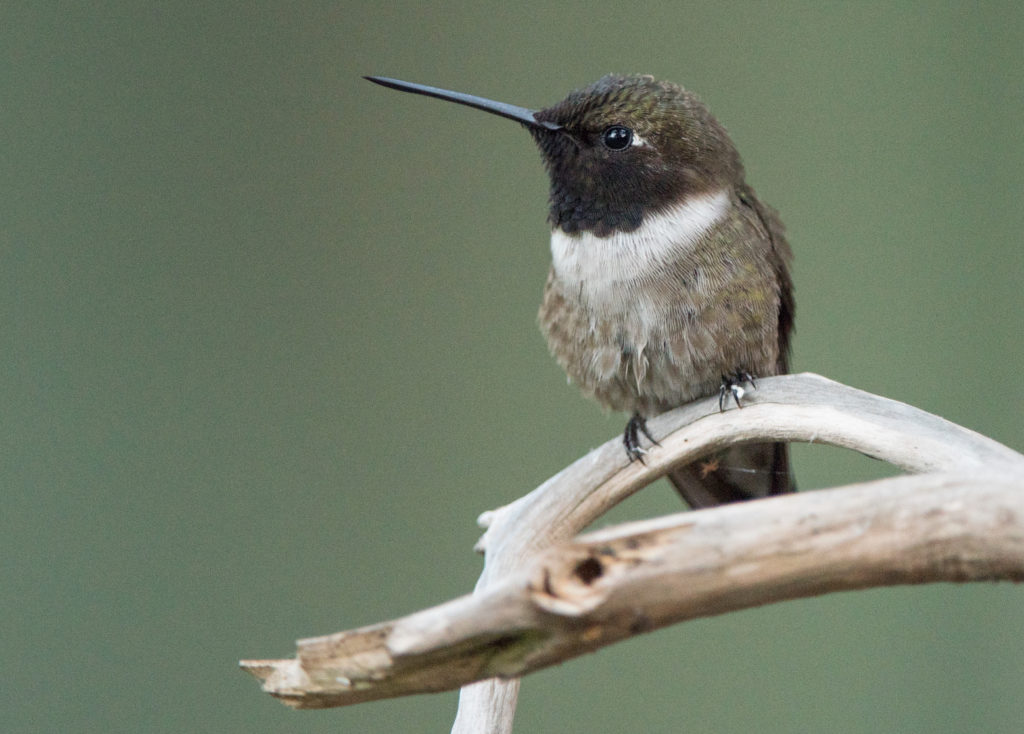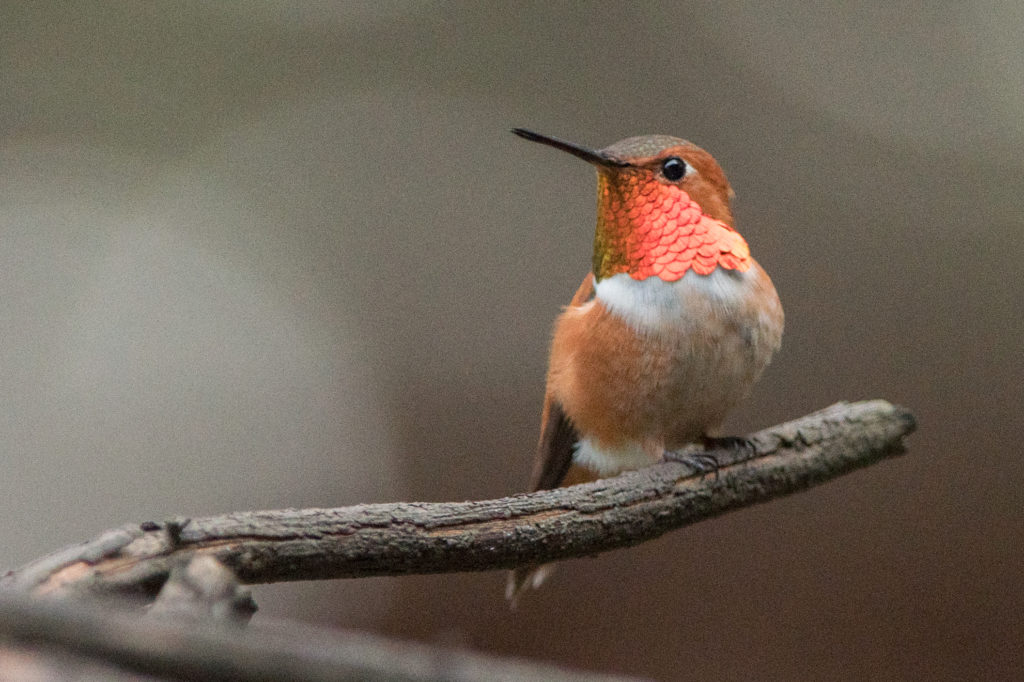My recent posting regarding the arrival of the first Rufous hummingbird at our house brought a few stories and news of arrivals at other locations. This sparked my memory of one of my favorite hummingbird stories dating back to the late 80’s when we lived in Austin. I’m going to relate that story here.
My wife and I lived in a unique house on a greenbelt, within walking distance of the downtown Austin area. The greenbelt and a large vacant lot next to us attracted lots of birds and we were successful in attracting Eastern Screech owls and Wood ducks to nesting boxes we had erected. It was a little bit of paradise in the middle of a large city.
When we first acquired the house in 1987 I assumed that we could attract Black-chinned hummingbirds, the predominant hummingbird in the local area, to feeders we put out at the house. Despite having what I considered PRIME habitat, we got no hummingbirds during the several months (spring and summer) that would have been their season for residing in the area. I left the feeders out for a couple of seasons but when they didn’t generate any traffic, I got frustrated and quit putting them out.
We had a second floor deck that overlooked Bouldin Creek and had a couple of baskets of begonias hanging from the third floor deck. (I never saw a hummingbird access begonias… their flowers are apparently of no interest.) But one fall I saw a hummingbird flying around the back deck and I quickly made some sugar-water, filled a feeder and hung it from the deck. We attracted hummingbirds but only during the fall migration, a period of maybe three weeks.
The following and all subsequent years I didn’t have feeders out for the migration, but I would notice a hummingbird hovering in the exact spot where I had a feeder out the prior year, slowly rotating, obviously looking for a feeder that had been there the prior fall! This occurred whether or not we had plants hanging on the deck! From that time on my signal for putting out feeders was to see a hummingbird looking for a feeder during fall migration.
I must presume that one or more of these small hummingbirds, which apparently didn’t spend the breeding season in the area, was remembering our location and the feeder that it could use to further its migration! This happened year after year. I never put a feeder out until I saw a hummingbird looking for the feeder that had been there the previous year. I have to presume that our feeder/location was remembered for a year, and our location was probably only one of several that the bird(s) remembered and used on their annual migration south.
I just finished reading some interesting facts about hummingbirds. You might want to Google mentalfloss.com, 9 Adorable Facts About Hummingbirds by Kate Horowitz… which lends credence to my experience.

And if you are curious about the Black-chinned hummingbird, which doesn’t frequent our area, this is a photo of a male I took in the Central Texas area. (Unfortunately, the male Black-chinned hummingbird’s gorget is much more difficult to photograph than our Rufous’ or Anna’s.)
Incidentally, we logged our first female Rufous hummingbird on May 5, one day after the first male appeared.

